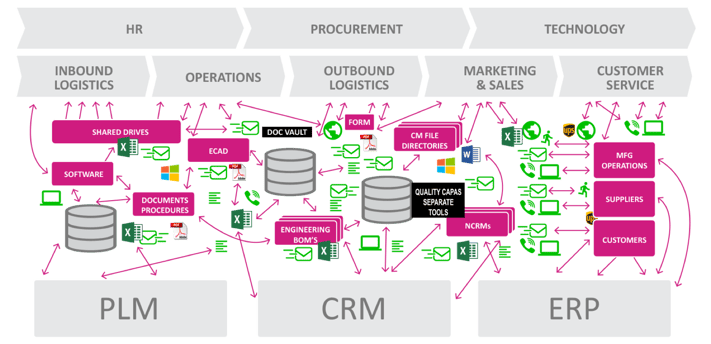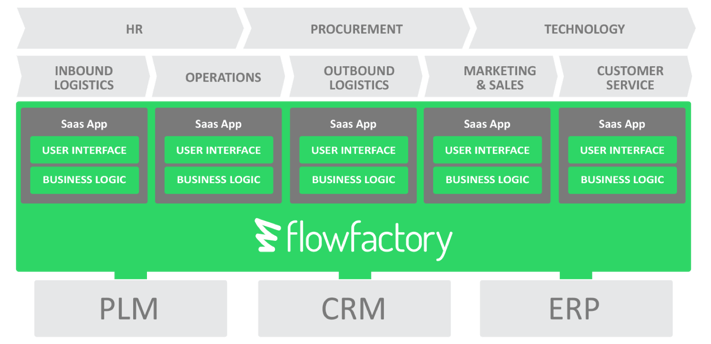
Costly Complexity
Gartner found in November 2016 that although IT organizations report general satisfaction with application management, most business users are dissatisfied. Truly, most business applications are unpopular.
Especially if they were expensive to build, applications stick around for a while, despite user complaints. That means significant IT resources are going toward maintaining and supporting applications that users are not that interested in using. This lack of interest can lead to lazy user behavior, limited feedback and lots of support calls and emails.
The measures of successful APM therefore must include both maintenance and deployment costs. Typically, we don't know which costs are mandatory and which are expendable. Too bad, because management is going to ask, regardless.
Measuring the effectiveness of APM can be difficult, which is why too many organizations rely on systems metrics like standing up the solution, releasing new features, etc. Low-code platforms allow rapid deployment of new business applications, which means metrics around utility, business value, and user experience can be measured and attained.
Active measures means more proof of business value
Moving from passive to active measures means more proof of business value. What increase in positive attention and budget would your IT team receive if you measured success by the impact of applications on the business, and the speed to market? This kind of business-facing ROI creates a much stronger argument for future investment.
Systems support business value, and (unfortunately) we can't just randomly move buckets around to save cost. Plus, investments include the building of business-friendly applications in the first place, as well as maintaining and improving them. There is no one way to do APM, and many experts offer conflicting advice. For example, "Think broadly and expansively" and "Focus on specific user experiences" are both commonly extolled as the right approach.
Living with existing applications is a core challenge for many organizations. Maintenance of rigid applications is often at odds with the need to increase business value, encourage innovation (e.g.: going mobile) and expand the portfolio to address new business needs - all while lowering costs.
Introducing the Competitive Layer
One solution is to create what we call a "competitive layer" of hosted, connected and data-driven applications that reside in a common platform layer on top of your legacy systems. A low-code platform allows you to build more business-centric applications quickly, engage users in both the design and the utility, and save money on APM.

Building and maintaining these specialized apps on top of legacy systems allows the business to increase reach, market value and competitiveness. It's the ticket to business success.
Paradoxically, in many IT organizations, there is a desire to harmonize the application portfolio – “do not build specialized application because it adds complexity to our application portfolio”. At the same time; specialized applications are good, even necessary – because they give us the competitive edge.
Low-code platforms like Flowfactory let you create applications in a rapid, agile manner, involving business experts throughout and helping to guarantee business value and user engagement. Using a common platform lets you better curate your applications, avoiding the usual, complex mix of technologies and versions with high fixed costs.
Often, super users are isolated in "untouchable" apps, where any talk of change frightens people who want to preserve business critical functionality - regardless of how hard to use or helpful those apps are to the business need. Those untouchable apps also require maintaining knowledge and support teams, which can increase costs for specialized talent.
Selecting the right tool is perhaps the best method to save money on effective APM. You want to use the most appropriate tool for each job. For example, using code level debugging tools in development vs. code level performance optimization (scaling) testing tools in QA.
Low-code application development platforms could be the right tool for the job of quickly creating business-specific applications that meet the needs of users. You might see cost savings, as well, specifically because:
- Common platform saves on training and eliminates the need for multiple kinds of specialists. Management of a single platform is easier and more cost efficient than multiple technologies.
- Low-code is a hosted platform and simple to set up across teams. That saves time and investment in onboarding and delivers ROI in a shorter timeframe.
- Low-code platforms are "agentless" - where no additional software (or expertise) is required to manage and monitor them.
- Agile apps are responsive to user needs and demands, allowing feature additions and changes without having to re-build underlying data connections.
- Simpler user monitoring and platform performance metrics. This allows new applications to be tested in the market, and then expanded to the full user base, which saves on deployment costs and limits risk from "big bang" launches.
- Expand the team and keep up with the rapid pace of business change by utilizing "citizen developers" as well as application developers to build on the same platform.
What are you doing to improve the efficiency and effectiveness of your APM program? Could low-code be an exciting addition to the mix?
Download our free whitepaper about Low-code in Swedish. A guide to technology that can dramatically increases the speed of application development and at the same time enables harmonization of the application portfolio.

